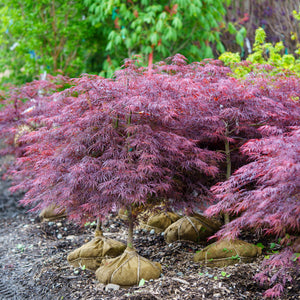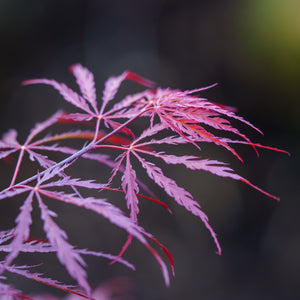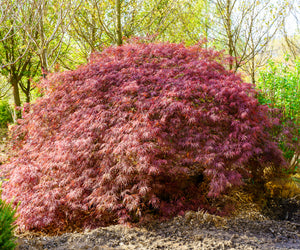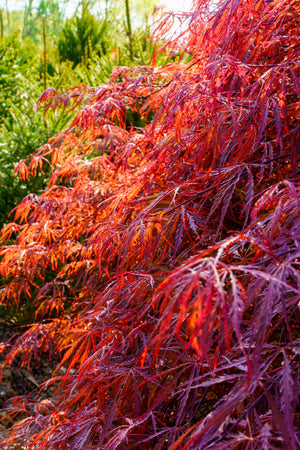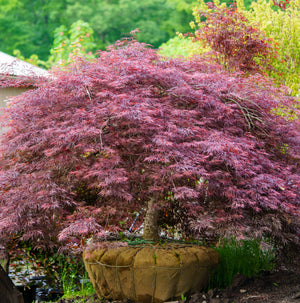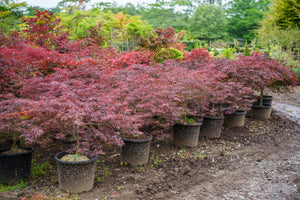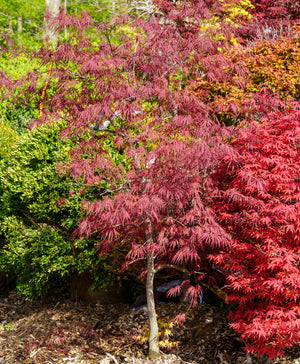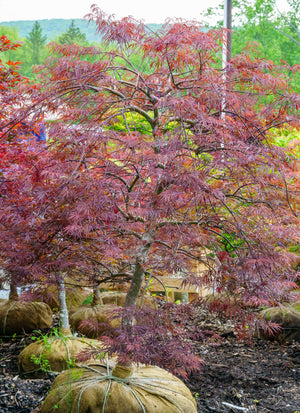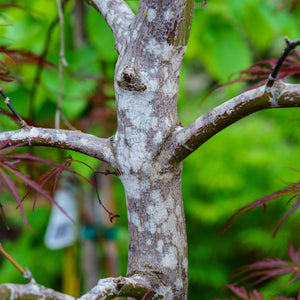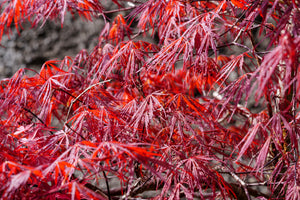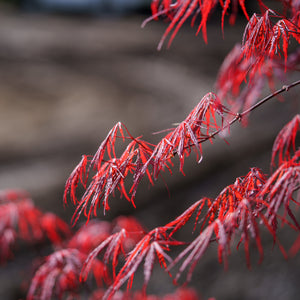Tamukeyama Japanese Maple: A Cascade of Crimson Elegance
Welcome to this week’s edition of our "Plant of the Week" series. This week, we’re excited to feature the Tamukeyama Japanese Maple (Acer palmatum var. dissectum 'Tamukeyama'). This elegant tree is cherished by landscape enthusiasts for its delicate, lace-like foliage and graceful, cascading habit. With a history that dates back over 300 years, the Tamukeyama Japanese Maple has earned its place as one of the most beloved and enduring cultivars in gardens across the world.
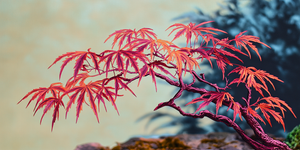
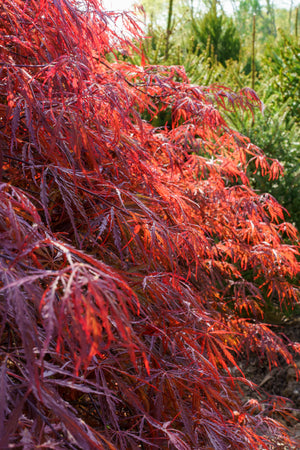
What Makes Tamukeyama Japanese Maple Special?
The Tamukeyama Japanese Maple stands out for its stunning, deeply cut leaves that create a soft, feathery appearance. These leaves emerge in spring with a rich, dark purple-red color, which deepens as the season progresses, maintaining its vibrancy throughout the summer. In autumn, the foliage turns a brilliant scarlet, creating a display that is often the highlight of the season.
The tree’s cascading form is another distinctive feature, with branches that gracefully arch downward, giving the plant a weeping, almost waterfall-like effect. This unique habit makes Tamukeyama a perfect choice for adding movement and texture to the garden, as well as providing an elegant contrast to more upright plants.
Tamukeyama is also known for its hardiness and resilience. It thrives in a variety of climates and is particularly well-suited to regions with hot summers, where it maintains its vibrant color and form even under the sun’s intense rays. The tree is relatively low-maintenance, requiring minimal pruning and attention once established, making it an ideal choice for both novice and experienced gardeners.
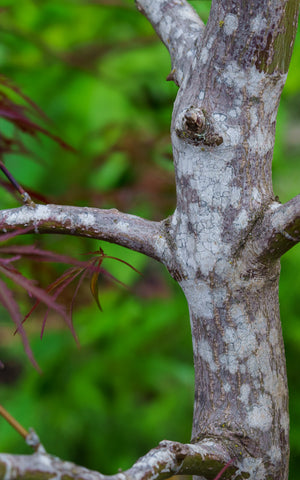
What is Tamukeyama Japanese Maple Used For?
The Tamukeyama Japanese Maple is a versatile tree that can be used in various landscape settings, offering both aesthetic beauty and functional value. Here are some of the key uses for this exceptional tree:
Ornamental Focal Point: The Tamukeyama’s striking foliage and weeping form make it an excellent focal point in any garden. It’s often used as a specimen plant, where its unique features can be showcased to their full potential.
Foundation Planting: With its compact size and graceful habit, Tamukeyama is well-suited for foundation planting around homes and buildings. It adds a touch of elegance and softens the lines of architectural structures.
Container Gardening: Tamukeyama’s slow growth and compact form make it a perfect candidate for container gardening. Planted in a decorative pot, it can be moved around the garden or placed on patios and balconies to provide a stunning accent.
Shade and Understory Planting: This Japanese Maple thrives in partially shaded areas, making it ideal for planting under taller trees or in the shade of buildings. Its tolerance for shade allows it to add color and interest to areas that might otherwise be difficult to landscape.
Water Feature Companion: The tree’s weeping form and reflective foliage make it a beautiful complement to water features such as ponds, streams, and fountains. The Tamukeyama’s leaves seem to dance in the breeze, creating a serene and tranquil atmosphere.
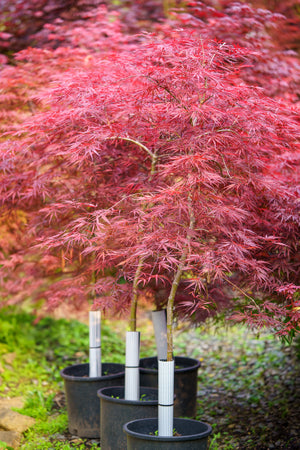
How to Care for Tamukeyama Japanese Maple
Caring for the Tamukeyama Japanese Maple is relatively straightforward, making it a favorite among gardeners of all skill levels. Here’s how to ensure your Tamukeyama thrives:
Planting: Choose a location with well-drained soil and partial shade for the best results. Tamukeyama can tolerate full sun, especially in cooler climates, but in hotter regions, some afternoon shade is beneficial to prevent leaf scorch. Plant in spring or fall, avoiding the hottest and coldest months.
Watering: Keep the soil consistently moist, especially during the first few years after planting. Deep watering is recommended to encourage the development of a strong root system. During hot, dry periods, more frequent watering may be necessary to keep the tree healthy.
Pruning: Tamukeyama requires minimal pruning, but it’s important to remove any dead or damaged branches in late winter or early spring before new growth begins. Light pruning can also be done to maintain the tree’s shape and remove any crossing branches.
Fertilizing: Apply a balanced, slow-release fertilizer in early spring to promote healthy growth. Avoid over-fertilizing, as this can lead to excessive leaf growth at the expense of the tree’s overall shape and structure.
Mulching: Mulch around the base of the tree with organic matter such as bark or compost to help retain moisture and regulate soil temperature. Be sure to keep the mulch away from the trunk to prevent rot.
Winter Protection: While Tamukeyama is hardy, young trees may benefit from some protection during their first few winters. Wrapping the trunk with burlap or providing a windbreak can help protect the tree from harsh winter winds and cold.
CONCLUSION
The Tamukeyama Japanese Maple (Acer palmatum var. dissectum 'Tamukeyama') is a timeless and elegant addition to any landscape, offering year-round beauty with its vibrant foliage and graceful form. Whether used as a focal point, a container plant, or a companion to water features, Tamukeyama brings a sense of tranquility and natural beauty to any outdoor space. With its minimal care requirements and stunning visual appeal, this Japanese Maple is sure to be a cherished part of your garden for many years to come.

